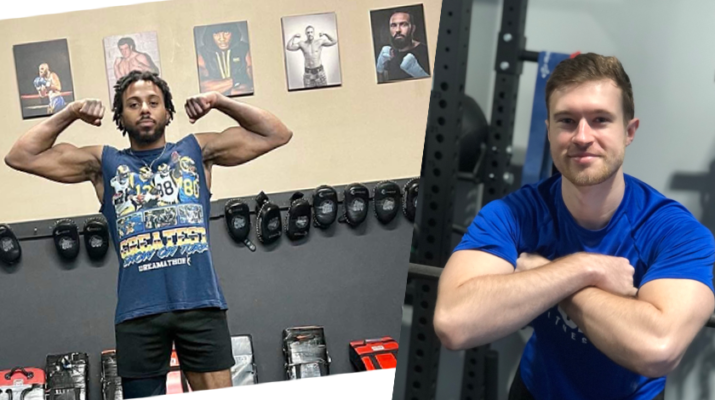By Deborah Jeanne Sergeant
The high-intensity interval training style workouts have surged in popularity since the pandemic began.
These home workouts require little equipment and time while eliciting a lot of movement.
As a variation of HIIT, Tabata workouts provide a good calorie burn in mere minutes.
Named for Japanese professor Izumi Tabata, the workouts consist of moving at a high intensity for 20 seconds and then resting for 10. This is repeated eight times, so that one round of Tabata training takes just four minutes, plus a warm-up time beforehand.
Each session includes eight different movements, which can provide plenty of variety.
The Tabata timer shows when it is time to alternate between movements. The movements may include calisthenics such as jumping jacks, burpees, jump squats, mountain climbers, high knee running, lunges, side “skater” lunges and push-ups. Each movement is performed as intensely as possible.

“Tabata is short and intense and will bring your heart rate up,” said Noah Basehart, certified personal trainer and general manager at NexGen Fitness and Recovery in Buffalo. “You can get the same benefit in shorter duration with higher intensity than a lower intensity with longer term.”
Two rounds (16 minutes) of Tabata training burn 240-288 calories, about twice the amount from running. As Basehart alluded, the movements continue to burn after the movements stop because the metabolism receives a boost.
Tabata and other HIIT require only body weight exercise, although other fitness gear may be helpful, such as dumbbells, kettle bells and a medicine ball. Basehart also said that equipment can help modify most tabata movements such as a TRX band to make performing squats easier by supporting the movement.
He does recommend working with a personal trainer to learn the proper movements for these calisthenics to receive the maximum benefit with the lowest risk of injury.
Compared with general HIIT training, Tabata workouts remove the clock watching as the timer automatically notes when to do what. The timer can also save the intervals set on it to avoid reentering it every session. By not feeling distracted by the clock, it is easier to focus on the movements. By limiting the time for rest, “I get a much better workout,” said Sean Felton professional MMA fighter and trainer at WNY Mixed Martial Arts & Fitness in Buffalo.
When training for competition, he wants to help his body resist the need for rest as fatigued muscles means an advantage for his opponent. Felton also likes that “you get a full-body workout. If you have limited time, they can help you.”
He advises clients to work out to their own level of intensity, not someone else’s. Scaling the intensity to a reasonable level while still challenging oneself is key.
Because of its intensity, Tabata workouts are not for everyone.
Joe Fox, personal trainer, certified functional strength training coach and owner of Train Smart in Buffalo, uses high intensity workouts in his program. However, many of his clients are in their mid- to late-50s with pre-existing conditions. Their fitness goals include greater flexibility, mobility and pain-free movement. After working with clients for a while, he may try greater intensity, especially with clients focused on fat loss.
“The overriding concept is the more intensity, the higher risk of injury,” Fox noted. “That’s not necessarily bad if people are prepared for it. Once they have developed a foundation for fitness, and they have core stability, endurance and glute activation, optimal mobility and good, clean movement patterns, we can move to increase intensity.”

